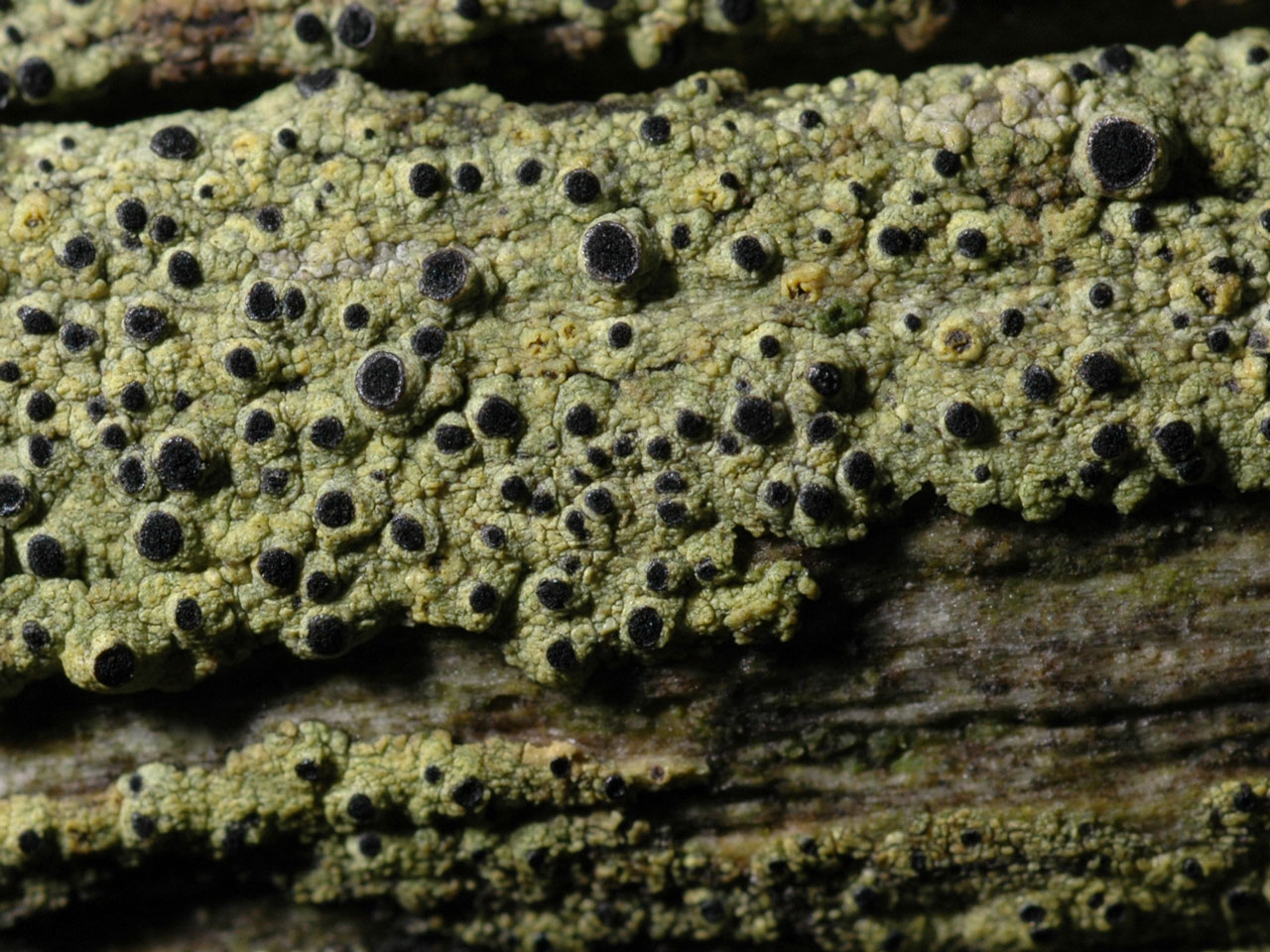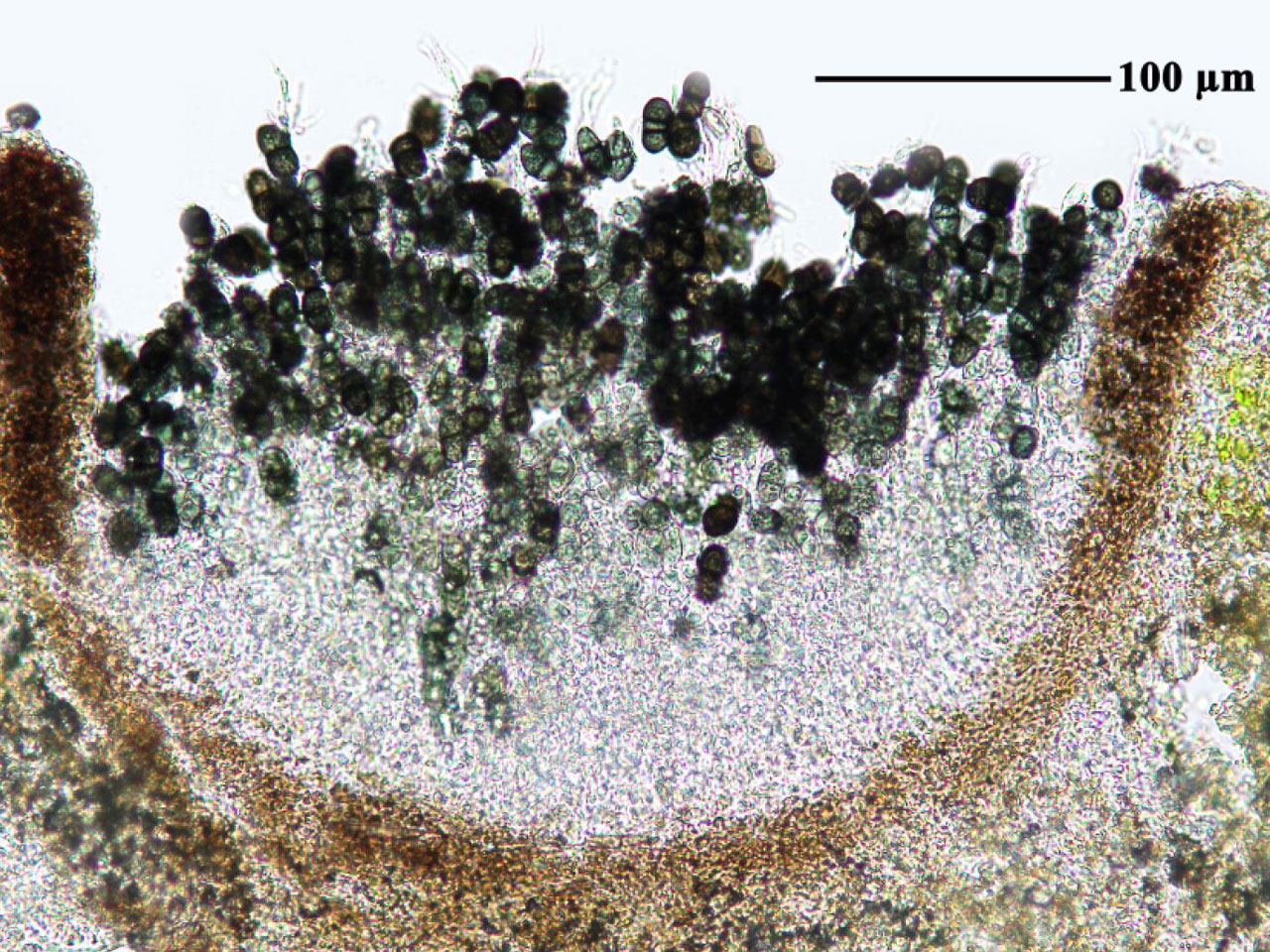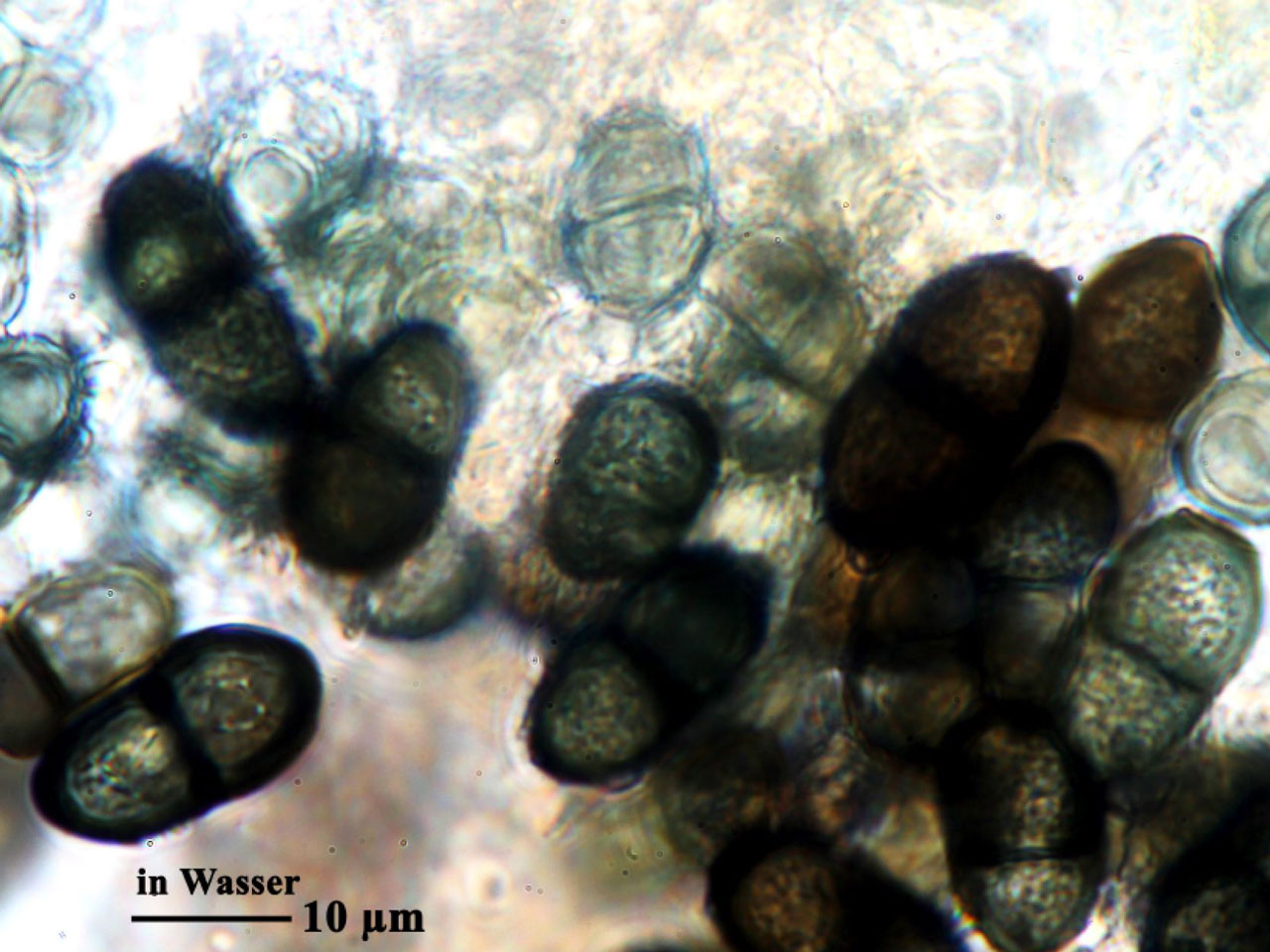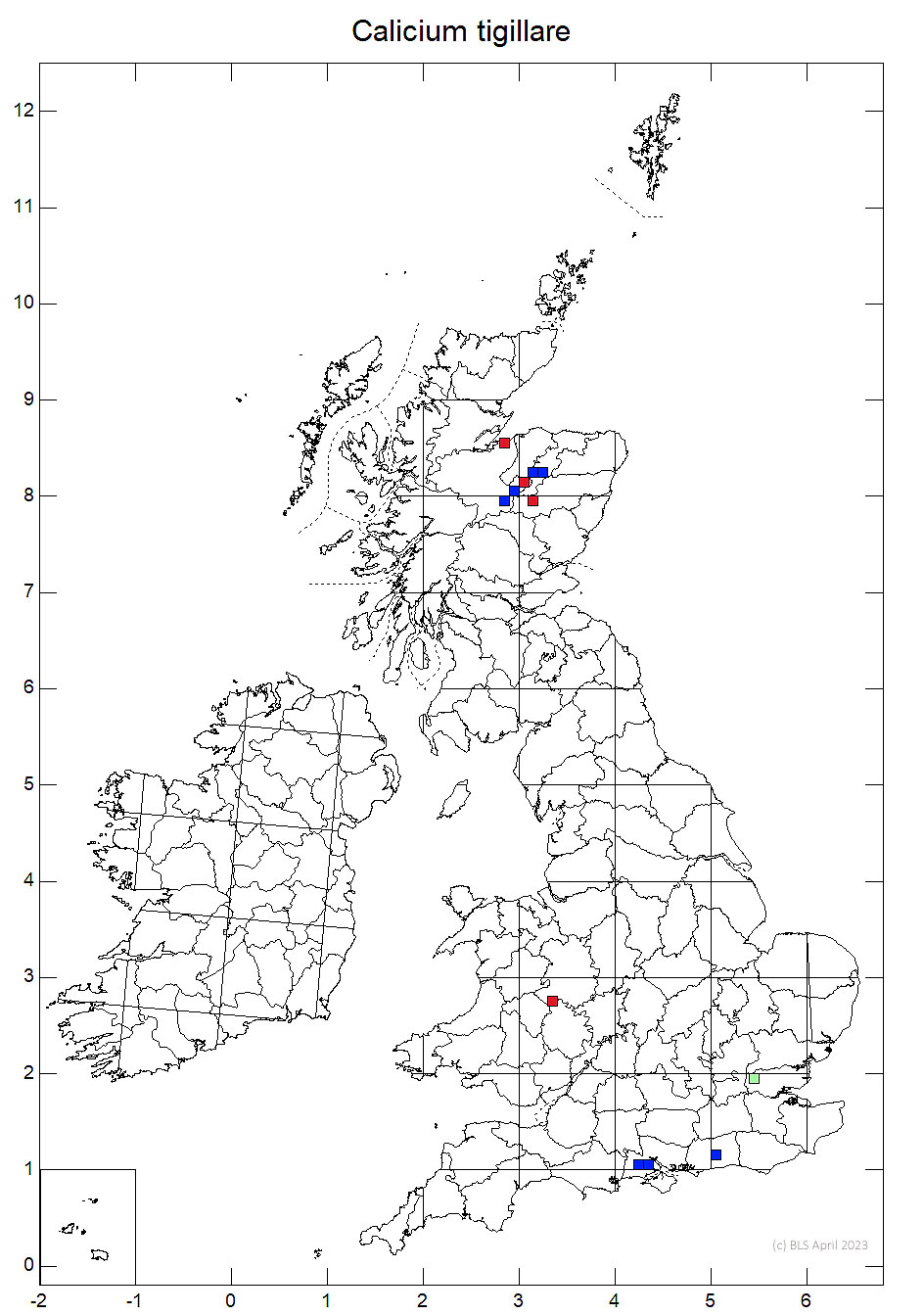A distinctive species with a bright yellow-green thallus with Calicium style apothecia with a black mazaedium (a loose spore mass, which makes sooty marks on one’s fingers if touched), but lacking the usual stalk, with the apothecia immersed in the thallus. Only confusable with Calicium notarisii which differs mainly in having submuriform ascospores as opposed to one septate spores. Mainly found on dry lignum on Pine trees and fence posts in the Eastern Scottish Highlands, very rare and possibly of casual occurrence beyond.
Thallus verrucose, of variable thickness, bright yellow-green. Apothecia 0.2–0.6 (–0.8) mm diam., immersed, not pruinose; true exciple thin, rim-like, brown. Ascospores 17–21 × 9–11 µm, 1-septate, broadly ellipsoidal, the surface smooth, without cracks. Pycnidia scarce, 160–190 × 105–125 µm, forming irregular clusters to 0.4 mm diam.; conidia ellipsoidal, colourless, 3–4 × ca 1.5 µm. Thallus C–, K–, KC–, Pd– (rhizocarpic acid, epanorin and two unidentified compounds by TLC).
Characterised by the yellow-green verrucose thallus, immersed apothecia and 1-septate ascospores. Morphologically very similar to C. notarisii which has submuriform ascospores and more frequently occurring pycnidia.
On wood, especially of conifers, and gate posts in old forests. Possibly an ephemeral spore vagrant in the south of its range but has more stable populations in the Scottish Highlands.

Very rare. England (Sussex, New Forest, Herefordshire), Scotland (E. Highlands).
Occurs thinly on lignum in both anthropogenic habitats such as fence posts and on Scots Pine trees in open old growth native pinewoods in the eastern Highlands especially in Strath Spey. Beyond this established population, the very rare and scattered occurrences are potentially the result of long distance dispersal events which have not resulted in established populations.
Britain: Near Threatened
Scotland: Priority Taxon for Biodiversity in Scotland
Cannon, P., Prieto, M., Coppins, B., Sanderson, N., Scheidegger, C. & Simkin, J. (2021). Caliciales: Caliciaceae, including the genera Acolium, Amandinea, Buellia Calicium Diploicia, Diplotomma, Endohyalina, Monerolechia, Orcularia, Pseudothelomma, Rinodina and Tetramelas. Revisions of British and Irish Lichens 15: 1-35.
Text by Neil A Sanderson, based Cannon et al (2021)



